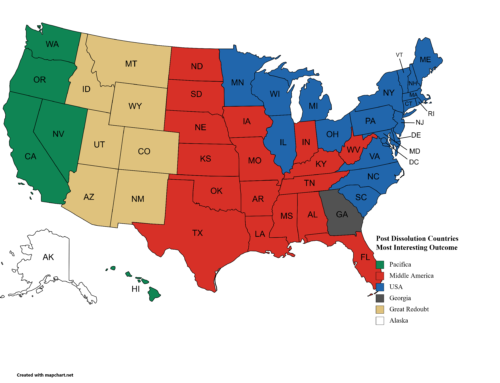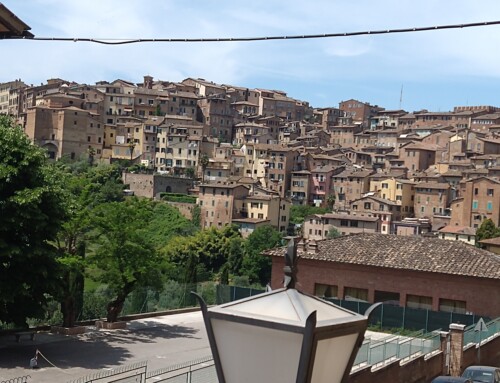With time comes clarity. That is the case with much that happens in life. So it is with the Coronavirus. Not with the science of how the virus infects people. That is known. But with how it moves from person to person before they show symptoms, how long it can remain on surfaces, how far it spreads through the air, all is becoming more clear over time. That is good in and of itself.
There is another area in which time offers clarity. We’re learning every day how much people are willing to take in terms of isolation. We’re learning the limits of non-enforced limits to movement. We’re learning how much stronger is the desire to salvage the economy than it is to limit risk to all people across the board.
We cannot understate the impact of peoples’ acceptance or lack of it to government-directed, but self-enforced, isolation and distancing as the key variable in the equation of how long this pandemic will last. When I look around my own small community, I see a community pretending to avoid contagion. I do not say this mockingly in any way. I say it as an observer. Yesterday I went to Wal Mart to pick up medicine for my father-in-law who is quarantined in an assisted living facility. I pulled into the parking lot which was no less crowded than on any other day in any normal year. I pulled on my face mask and kept my distance from a dozen other people trying to enter at the same time, none of whom wore any protection. I spent 5 minutes total in the store, departing as soon as I got the medicine. But the number of people strolling through the store, as if using it as a place to get out of the house, was truly surprising.
The Wall Street Journal reported today about a movement of protests across multiple states to pressure their governors to reopen immediately. This is a powerful movement not so much, in my opinion, because people want all businesses to open, but more because the logic of who is open and why varied from state to state and within states. When governors decide that certain businesses are vital, they accept a level of risk for those people who make those vital businesses function. So a governor declares a parts manufacturer or meat packer vital. That means those people who work close to each other on the assembly line must continue to do so. What we see is that some of those operations are quickly hit with the virus spreading rapidly through the work force, forcing a shut down because there literally aren’t enough people to keep it functioning. The same is happening with police, emergency workers, sanitation workers, cleaners, etc.
Yet people naturally see that there is an unequal distribution of risk. Why is it necessary for some businesses to assume risk, knowing that when their people are infected, their operations will naturally cease, yet others are not allowed to assume risk and cannot make any livelihood until they also are infected? This is the logic driving protests and, I think, what is driving individuals to question the value of indefinite social distancing.
We’re also missing the key rationale behind government-imposed isolation. It isn’t to keep everyone from contracting the virus. It is to keep that rate of public contagion within the capacity of the health care system to manage infections. For some locations like New York City, hospitals are overwhelmed. In other places even with a fair number of infections, the hospitals are nearly empty as the infected are recovering at home in order to keep the hospitals open. And with all elective surgeries being suspended nearly everywhere, hospitals are laying off staff due to collapsing revenues. All this with beds open awaiting the sick, who are in most cases at home.
Again, the ultimate goal isn’t necessarily to prevent mass infection. It is to keep the rate of infection within the capacity of the health care system. If everyone accepts that goal, the strategy to achieve that requires a very long time, perhaps 18 months, to allow the population to slowly spread the virus within the health system capacity to treat them.
But that long time frame has economic consequences that the population seems to be wavering on accepting. It seems to me that the acceptance of long-term isolation is on the verge of collapse. From business, to education, to health care, economic activity requires the free movement of goods and people. And when people see that they can move about town with masks and keep their distance, they want to see everything opened.
That loosening of lockdowns and distancing will happen soon. Government leaders are unwilling to see the economies suffer much longer. That will have massive consequences. Specifically, there will be large spikes in infections just as has happened in Singapore, which went from model of managing the spread of Coronavirus to a major epidemic within days. Business leaders around the country are clamoring for opening and this push is being given top cover by many Republican lawmakers. From today’s New York Times: Representative Trey Hollingsworth of Indiana acknowledged the chance of “loss of life” from an early end to social distancing but asserted, nonetheless, that it was better than the alternative. “It is policymakers’ decision to put on our big boy and big girl pants and say it is the lesser of these two evils,” he said to a local radio station. Senator John Kennedy of Louisiana was even more blunt during an interview on Fox News on Wednesday. “We gotta reopen, and when we do, the coronavirus is going to spread faster, and we got to be ready for it.”
There is a difference between what people can see and what they can envision. This is not to say people are incapable of foreseeing consequences. But human nature is such that what you see right now clouds your ability to envision something different or potentially worse. What people see today is a pandemic largely under control in most places in the country. While nearly 5000 people died from Covid-19 yesterday along in the US, that number spread across the country means that people see small consequences locally. They see and feel the weight of a crushing economic situation and want their paychecks back. They see a life very different from the life they had 4 months ago. Many who are in terrible straits right now would love to go back to merely struggling. Many who were relatively well off want to go back to that. So while they see what is bad right now, the average person very likely is willing to take the risk, which most believe will largely be borne by others, of opening everything back up now.
So again, let me reiterate that I do not think that loosening the social distancing guidelines and opening of the economy is a good without consequences. I am saying that the sum of peoples’ limits on willingness to play along will will result in either people merely returning to their normal routines or else government leaders acknowledging this trend and lifting restrictions.
That return can be done at least two ways. First is to to allow whatever happens to happen. There is much sentiment out there to allow the virus to run through the population and let it build antibodies in most people who will likely show mild or no symptoms and do its worst on the rest. Having seen first-hand what it has done to otherwise very healthy people in their 30s, 40s, and early 50s, this is a course of action I wouldn’t want to see taken. The second is to slowly and deliberately open businesses with strict guidelines for distancing and personal protective wear. No entry to people who refuse to wear even a homemade mask or face covering. Specific guidelines based on size of public space to determine how many people can be allowed in at any given time. Restaurant would be difficult because it is not possible to eat with face coverings. On the other hand, people who come in together to eat must be considered as willing to accept risk while servers and cooks ought to be in protective gear.
Then how long will this easing take and how long will restrictions last? These are rational questions that people want answers to, but the truth remains that we cannot say precisely today. We will have to see how the easing of restrictions affects the spread of the virus. In some places, I am certain it will seem as if nothing was wrong all along. Those are the places in which most likely the distancing regime worked as it was supposed to. In other places, especially denser cities or those with greater numbers of larger households, there will likely be a very rapid spike in cases which may rapidly overwhelm local health care capacity. So there will necessarily be a tide-like flow of easing and tightening of restrictions around the country, between and within states. It will end only when some large percentage of the population has the antibodies in their blood from the natural spread or after a suitable vaccine is deployed around the world. Yes, world, not just the US. As long as we live in an era of global movement, we cannot isolate the country from the spread of infectious disease.
This rapid loosening of distancing requirements and opening of business will require business and community leaders to deliberately plan to keep themselves operating as long as and efficiently as possible given the uncertainty of the viral spread. That means churches will have to think about how people enter and exit and whether they will accept the risk to gathering in close quarters. Restaurants will have to assess the risk to forced closure if health departments trace outbreaks to densely packed meal service. Airlines will have to decide whether to fill middle seats and allow seating in every row. And if they don’t, travelers will have to decide if higher fares are worth it given airlines can’t make money flying half full planes.
We will get through this. Humanity survived greater plagues is times past. We will survive this as well, but not without some sacrifice to comfort or the routines we’ve become accustomed to.
Keep thinking…






Leave A Comment